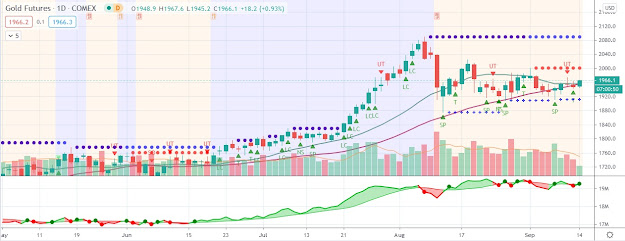Only a matter of time before policymakers are forced to fire up the printing presses
The gold price advanced by $8.12, or 0.5%, to $1,611.45 per ounce on
Monday amid modest weakness in the U.S. dollar and a broad-based rally
in financial markets. The price of gold
built on its gains from last Friday, which had snapped a four-session
losing streak for the yellow metal. However, the gold price remains
well within the $1,560 – $1,630 range that it has occupied since early
May.
Last week the gold price endured a bevy of headwinds but displayed a considerable amount of resiliency. The Federal Reserve and the European Central Bank (ECB) each chose to not announce any new stimulus measures at their respective monetary policy meetings, while the monthly U.S. employment data came in well ahead of economists’ estimates.
Still, the price of gold finished back above $1,600 per ounce amid speculation that it is only a matter of time before policymakers are forced to fire up the printing presses once again to combat the escalating risks of the European sovereign debt crisis and a slowing global economy.
David Jollie, a precious metals analyst at Mitsui, wrote in a recent note to clients that “There is still room for easing if it is required, and there is still a perception that it may be required. The question of when that is, with the U.S. elections approaching, makes it difficult to be super bullish on gold, but that doesn’t alter the fact that (the perception is there).”
Looking to the week ahead, the list of catalysts for the gold price is particularly light both in North America and Europe. With regard to the U.S. economic calendar, the only key report likely to have a significant impact on precious metals and the broader markets is the Weekly Jobless Claims data, due out Thursday morning.
As a result of the quiet schedule ahead, analysts at VTB Capital forecasted that there will be “Some dull trading for gold at the start of this week as players take a breather from Friday’s action, focusing on euro zone headlines.” The firm added, however, that “We expect the wider June-July range to remain intact” for the price of gold.
Last week the gold price endured a bevy of headwinds but displayed a considerable amount of resiliency. The Federal Reserve and the European Central Bank (ECB) each chose to not announce any new stimulus measures at their respective monetary policy meetings, while the monthly U.S. employment data came in well ahead of economists’ estimates.
Still, the price of gold finished back above $1,600 per ounce amid speculation that it is only a matter of time before policymakers are forced to fire up the printing presses once again to combat the escalating risks of the European sovereign debt crisis and a slowing global economy.
David Jollie, a precious metals analyst at Mitsui, wrote in a recent note to clients that “There is still room for easing if it is required, and there is still a perception that it may be required. The question of when that is, with the U.S. elections approaching, makes it difficult to be super bullish on gold, but that doesn’t alter the fact that (the perception is there).”
Looking to the week ahead, the list of catalysts for the gold price is particularly light both in North America and Europe. With regard to the U.S. economic calendar, the only key report likely to have a significant impact on precious metals and the broader markets is the Weekly Jobless Claims data, due out Thursday morning.
As a result of the quiet schedule ahead, analysts at VTB Capital forecasted that there will be “Some dull trading for gold at the start of this week as players take a breather from Friday’s action, focusing on euro zone headlines.” The firm added, however, that “We expect the wider June-July range to remain intact” for the price of gold.




Comments
Post a Comment